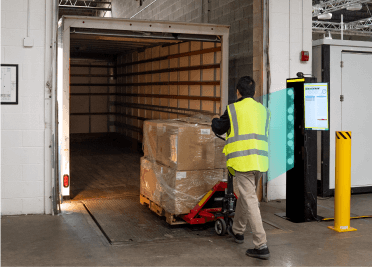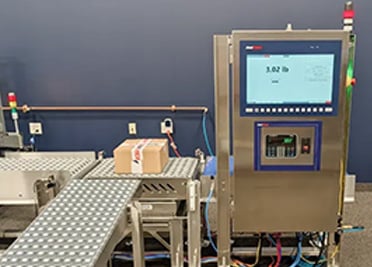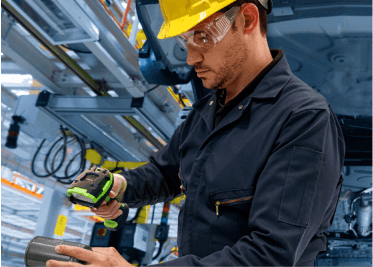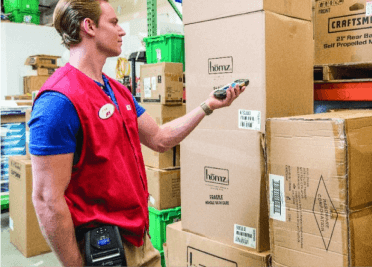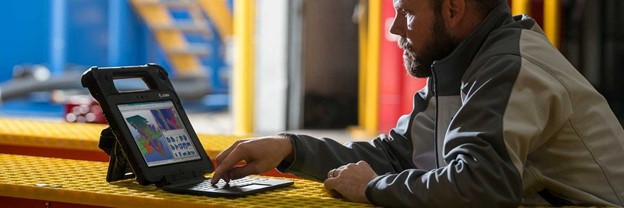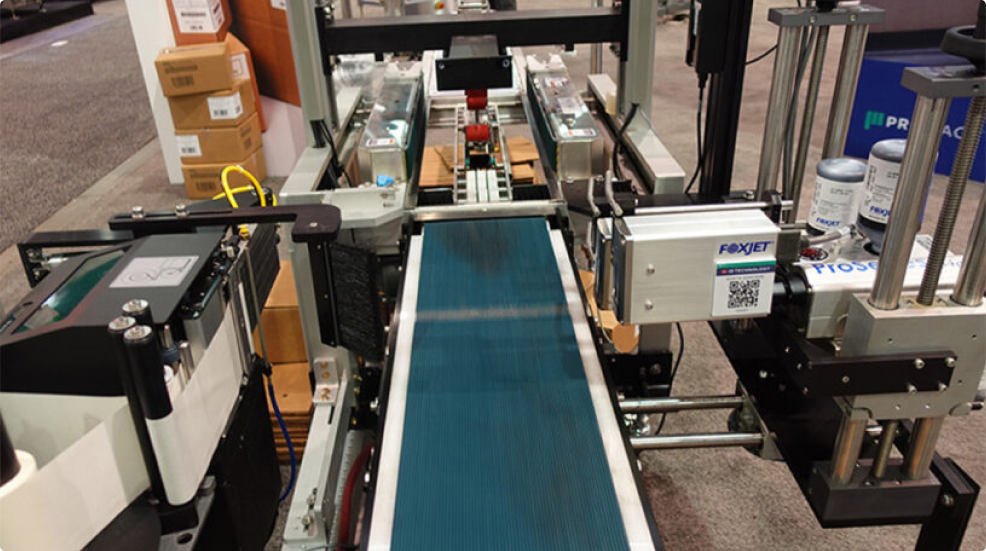When thinking about modern-day technology innovators, you probably conjure up images of semiconductor manufacturers, smart device creators and the well-known online giants – not the rail industry. That is because you may not be aware of the smart logistics systems and award-winning technology applications that railroads across the Americas have been implementing for several years now to keep their conductors safely connected and critical scheduling and cargo data visible, regardless of the distance traveled or the amount of shock and vibration endured. And you may not hear a lot about the mobile technologies being implemented across terminals and intermodals to facilitate real-time asset monitoring, track yard resources and optimize routes (to maximize capacity on lines). But, behind the scenes, an impressive level of innovation is occurring to the benefit of railroads, their customers and consumers. Especially across the Americas.
“Over the past decade, the freight rail industry has experienced a technological revolution that has transformed the way we transport goods,” as Politico emphasized.
Mexico’s largest rail operator is proof.
Ferrovalle’s IT team has been pushing the technology envelope and driving incremental innovation efforts ever since the Ferrocarril y Terminal del Valle de México and Ferrovalle Intermodal facilities were privatized in 1998. Software applications developed in-house – such as the web-based container tracking Logistic Intermodal System first implemented in 2005 – are upgraded every year per Ferrovalle’s CIO Ruben Castillo Santistebe. But in 2010, Ferrovalle recognized an increased need to share information “from the black box to the glass box” in real time to provide total transparency to clients.
With pen and paper processes still dominating most of its data systems, Ferrovalle sought a truly mobile computing solution that was safe to use in the terminal, the intermodal facility and even on its locomotives on all routes. Ferrovalle aimed to give workers and customers full access to rail information, a “zero distance” solution that would allow them to perform their duties at the scene, while in route to the next call or at the station. After developing its multi-award-winning Smart Logistics system software in-house and finding the right rugged tablet platform to deliver the application to workers in the field, Ferrovalle immediately improved its logistics precision across its locomotives, terminal and intermodal facilities. The tablets consistently generate and distribute the information critical to container tracking, damage inspection, delivery and shipping and work order completion.
“The rugged tablets have served as powerful and effective ‘zero distance’ tools in the transfer of real-time data from the field to each business unit, and even to customers seeking real-time tracking of their goods,” explains Ferrovalle CIO Rubén Castillo Santistebe.
(This case study provides details about the solution’s broader impact across business functions.)
Numerous Class I railroads in North America are experiencing similar benefits from their innovative mobile technology applications. One long-time customer first deployed Zebra Windows® and Android™ rugged tablets in 2013 and recognized immediate efficiency gains in rail yard operations. With consistently rising cargo transportation demands and an expanding workforce, mobility requirements at this customer have continued to increase since the initial implementation. That is why it has increased its implementation of rugged tablets equipped with top handles to facilitate fast check-in and inspection of inventory-filled trailers as they are transferred from the yard to the rail cars. The flexibility and performance of these rugged tablet platforms give the railroad the speed, data and tracking capabilities necessary to consistently optimize asset performance and improve worker productivity as supply chain economics rise.
A major sugarcane processor in the U.S. also put rugged tablets in the hands of various workers several years ago, one of the first to do so. It quickly improved control over a large area of its rail operations. As a result, it cut its data input cost to zero and reduced errors and lost data. In turn, it was able to get the maximum, premium yield from its cane fields.
Results such as these have been leading railroads in other regions to take note.
“The intensity and concentration of rail, freight and intermodal activities [throughout the UK] puts significant pressure on rail operators to improve logistics precision. So too does the daily obligation of maintaining track, rolling stock, and managing people as customer demands fluctuate,” reports Rail Pro Magazine. In other words, rail operators around the world are equally challenged by increasing business demands and could benefit from the fundamental, and widespread, financial gains offered by moving to a paperless operation. However, as evidenced in this article, UK rail operators are just now ready to follow the lead of the American rail industry’s early adopters.
“Fortunately, rail operators like Mexico’s Ferrovalle have already proven the business application for rugged mobile computers and demonstrated the efficiency gains that can be made on the locomotive and in the intermodal,” as Rail Pro Magazine confirms.
JUST HOW MUCH THE RAIL INDUSTRY IS INVESTING IN TECHNOLOGY – AND SAVING AS A RESULT
According to a white paper from the Association of American Railroads (AAR), “the rail industry spent $100 billion on infrastructure, equipment and technology” between 2014-2018. And though the investments span the technology spectrum – machine learning, big data, predictive analytics, and advanced sensors, just to name a few – it is mobile technology that is garnering the attention of rail industry leaders right now. Without the right mobile computing system in place, it is impossible to effectively capture, analyze and distribute the data that these advanced technologies – and rail industry workers – depend on to do their jobs.
As Capgemini principal Bob Hood told Logistics Management: “Increased transportation costs, a driver shortage, and changing regulations—all of these issues are driving the increased adoption of mobility.”
However, it is not enough to put a Wi-Fi-enabled mobile device in workers’ hands. Rail operators have to mobilize highly complex and integrated logistical tasks in a way that is simple and straightforward.
You need high-quality insights to more effectively coordinate and adjust schedules, optimize asset performance, and improve worker productivity to target levels. You also need to ensure that the mobility solution can be utilized for common “clipboard” processes without disrupting the flow of information or slowing workflows related to:
- Audit and Regulatory Compliance
- Cargo, Fleet and Inventory Management
- Computer Aided Dispatch, Scheduling and Work Orders
- Inspections, Maintenance and Repair
- GIS/Mapping, Route Optimization and Navigation
- RFID Locomotive and Yard Resource Tracking/Signaling
- Safety and Environmental Risk Management
Therefore, you need high-quality mobile devices equipped with powerful processors, expansive storage and memory and hot-swappable batteries that provide an experience equivalent to a traditional desktop or laptop computer. And those are just a few of the considerations:
- Size and Usability: Where will the mobile computer be used the most, in hand, on an intermodal crane lift or in the locomotive? Will workers need a keyboard for data input? What about glove touch access, cameras or built-in barcode or RFID scanners? Will they need full computing capabilities in the field? Will the device work anywhere, in any condition, around the clock?
- Power and Performance: Will the device’s battery last a full shift – or trip? How much computing speed do workers need to send signaling data or retrieve cargo packing orders fast enough? How much memory and storage capacity are needed for your business applications and/or GIS?
- Connectivity and Communications: What types of input/output (I/O) ports are needed to connect to specialty peripherals? Is a mobile gateway/router is needed? Do you need Wi-Fi, 4G, satellite GPS or RFID connections?
- Mounting vs. Mobility: Are any specials screws, springs or pins needed to keep the mounted solution securely in place? What is the mounted solution size? Other ergonomic factors? Do you need to add a Kensington Lock?
- Data Security: How will you secure my sensitive “internal cargo” (i.e. data)? Multi-authentication, encryption, TPM, biometrics?
- Device Management: Can you manage the device remotely via enterprise mobility management (EMM)/mobile device management (MDM) solutions? Can you even see where a device is located or confirm the health of the device that’s halfway across the country?
- Viewability: Can workers see the device in the locomotive cab or outside in the yard? Do they need to? Is the screen too bright/dark? Text too small? Any glare?
- Future-Proof Plans (and Immediate Interoperability): What operating system (OS) do you run now? What do you plan to run in the future? Is the device compatible with your existing software and back-office systems? Will it continue to be compatible in the future? What is the total cost of ownership (TCO) vs. return on investment (ROI)?
And, regardless of the business application, the mobile devices are likely going to be used 24/7 in the yards and on locomotives. So, you must also ensure they are able to operate in extreme conditions – heat, cold, rain, and sun – and tolerate constant vibration, exposure to contaminants, and drops.
At the same time, rail transport remains one of the highest volume cargo channels, especially for hazardous materials. Railroads need a reliable way to keep routes both safe and on-schedule through shared-lines near cities and in some of the most rural and most remote territories worldwide. Therefore, you must also consider device and worker safety: Will the mobile device be in close proximity to hazardous gasses, flammable materials, or fine dust? Is a screen-off-when-driving application necessary? Will the device stay online at all times, regardless of the environmental conditions?
The reality is that the failure rates of consumer-grade devices and lack of HazLoc certifications make popular off-the-shelf tablet, handheld and laptop computers too risky for rail applications – even those that are marketed as “rugged” only because of their IP68 waterproof and dustproof rating (which is easy when there are no I/O ports). They also lack the computing power, specialized I/O, enterprise security features, and custom-configurability that the rail industry’s unique mobile technology use cases mandate, among a host of other capabilities highlighted above.
On the other hand, rugged mobile devices “resist failure from being dropped, soaked, and abused. Built-in durability and performance capabilities are just a few reasons why the total cost of ownership (TCO) for a rugged mobile computer over a minimum three to five-year period is far lower than a ‘consumer grade’ tablet or smartphone in a protective case that one might buy from a tech or mobile retailer,” as Rail Pro Magazine reports.
If the cost of downtime is more than the purchase price of the tablet, then it is essential to select a rugged instead of a non-rugged device. For example, a field service technician with a broken tablet can cost an employer lost labor expenses, the IT resources required to re-provision a new tablet and the cost of unserved customers – a cost that can quickly rise into the thousands of dollars, which is a lot more than a tablet sticker price.
But, in the case of a railroad, this TCO analysis can become even more dramatic. If a tablet fails (or can’t run the full software suite needed, can’t interface with a critical backend server, etc.) and a train is delayed, then a huge amount of cargo is delayed and there may be a dramatic ripple effect delaying other trains, other customer pickups and deliveries. There is a lot of cargo moved by a freight train, so any downtime because of a mobile device is very expensive to a railroad – which is why rail operators must choose mobile devices most likely to survive. Those aren’t the only factors impacting TCO and ROI, though.
Railroads need enterprise-grade mobile computers that are backward compatible and future ready, able to interface with other smart devices, geolocation applications, and the Internet of Things (IoT).
In Ferrovalle’s case, these capabilities were essential to its success. At the same time, rugged tablet, 2-in-1 and handheld mobile computer platforms boast an extreme level of application flexibility that is necessary to developing a paperless system. After all, the hardware is just one component of the total mobility – and IT – solution. As Ferrovalle and countless other transportation sector leaders will attest, the software selection or development will often precede any hardware purchase. In fact, it was the versatility, reliability and interoperability of rugged tablets that enabled Ferrovalle to save more than five million pesos within the first year of implementing its mobility-based Smart Logistics Systems. The combined solution also helped the rail operator to increase revenues in its receiving, storage and merchandise warehousing operations, achieving nearly a 40 percent increase in comprehensive income during those 12 months.
Additional cost savings were achieved as productivity increased and crews could access up-to-the-minute data from a multitude of systems, whether they were in the yard, inside train cabins or operating a crane. Employees could immediately access and complete checklists and provide container status updates, including damage reports.
